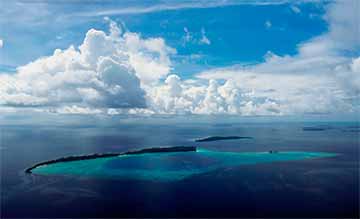Responding to adverse comments in the local press and on social media about the current state of bed shortages at the NRH, the hospital’s CEO Dr, George Malefoasi is mentioned in this morning’s Solomon Star newspaper as saying, quote.
The Ministry of Health and Medical Service (MHMS) is incapable of solving the beds shortage faced at the National Referral Hospital (NRH).
The Ministry informed the media yesterday that they’re fully aware of issues of overcrowding and bed shortages at the Accidents and Emergency Department (AED) and they’re working hard and closely with the NRH management to address the issue.
The Chief Executive Officer said the needs of the NRH have doubled up each year and has kept the Ministry at bay in solving the bed shortage issue.
“So, our current stage in general is that the demand for hospital admissions is increasing or doubled. Despite the COVID-19 pandemic, we still have heavy workloads at the emergency department as well at the other wards,” he said.
Dr.Malefoasi said the public at large should understand that the shortage of bed issue experienced at the NRH is similar to what happens to other hospitals in the world.
He said despite the double resources received over the years, it is not yet enough to meet the hospital’s needs, as the country has resources that are not sufficient enough to contain the depth of the burden of the diseases.
“We have resources that are not enough to expand to the extent of the diseases in the communities and also within our families, so what is needed is innovation and change, and this is something that we always try to encourage at the NRH and in the Ministry as a whole.”
Dr.Malefoasi said the other contributing factors to the issues are funding and budgets, slow process of procurement and not enough manpower.
End of quote.
In a separate response to the ongoing hospital bed crisis, the Permanent Secretary of the Ministry of Health and Medical Services, Ms Pauline McNeil, is also mentioned in the Solomon Star newspaper today, and I quote.
In terms of support from the National Government, the Permanent Secretary for Ministry of Health and Medical Service (MHMS), Pauline McNeil said they have received increased support lately.
She made the comments in her closing remarks during the press conference, Tuesday.
It was understood that the press conference was held after her Ministry was bombarded with criticism from the general public about the current situation of the National Referral Hospital (NRH).
She told the media that that the government has shown commitments towards NRH and its services.
“Over the years we have seen an increase of budget support and for this year budget is SBD$28 million for the National Referral Hospital unlike 10 or 5 years ago,” PS McNeil said
Ms. McNeil said they are also trying to make use of the current support they have received for COVID-19 to be used for some of the services at NRH.
“And of course we have additional support in terms of specialised equipments like the CT scan which is ongoing, that’s a big support from the national government,” she added.
While the Permanent Secretary for the Ministry of Health acknowledged the role of the media she went on to challenge them to provide factual information to the public.
“I want to reach out to you to also report based on accurate information and evidence that is coming out from the Ministry.
“The information must be official and have integrity,” she added.
End of quote.
Comments
To be fair, it is hardly justifiable that I as an ‘outsider’ should be making comments on the current situation regarding bed shortages at the NRH.
I do so because I have helped on several occasions in the past years to get hospital beds for the hospital and some for the provincial hospitals when I was aware even then of finance and procurement difficulties.
I linked up with a charity organization in New Zealand, ‘Take My Hands’ (TMH) and it has become over the past 9 years or so my partner charity in my efforts to support the NRH and other bodies in the Solomon Islands, including the Hearts of Hope charity mission in Malaita, the SIDT and in turn material help for women’s shelters.
In the first instance I was instrumental together with the then Medical Superintendent at the NRH, Dr Dalipada, in getting a MOU drawn up and agreed between the MHMS/NRH, TMH and myself as a volunteer coordinator.
The MOU once signed provided for regular shipment via containers of hospital beds, hospital supplies, bed sheets, mattresses, hospital furniture, crutches, walking frames, wheel chairs and consumable medical supplies, generally including disposable hand gloves and sanitizing agents.
A payment of NZ$25,000 was quoted in the terms of the MOU for a full year’s supply of containers with the items I have mentioned.
TMH consented to accept half of the payment terms in the first instance and once NZ$12,500 had been transferred the first consignment of hospital equipment began to arrive in four 40 ft containers.
The way the NRH worked in meeting its needs was fulfilled by sending me a list of needs which I then referred to TMH.
TMH checked their stocks and supplies and returned an inventory to the NRH. If agreed by the NRH as needed and acceptable the equipment was soon loading into containers in Auckland and shipment to Honiara followed.
Once the equipment arrived and cleared at the SIPA and local handling charges paid, the contents of the containers were delivered to the NRH and put into immediate use, or in some instances, distributed to one or more provincial hospitals.
The equipment sent by TMH was not new but in extremely good condition usually having been collected by TMH from hospitals in New Zealand when fresh equipment had been procured.
What TMH delivered by way of hospital equipment saved the MHMS and the government many thousands of S$ dollars and the procurement problems resolved.
Unfortunately, the MOU lapsed after the first consignments of containers because the second payment of NZ$12,500 was not met by the MHMS /NRH.
Knowing the need for equipment was an ongoing concern at the NRH, and particularly in respect of hospital beds, I made several local appeals through the local media for funding for TMH services to continue.
My appeals were responded to by the Executive Board of the Solomon Forest Association (SFA) who generously forwarded well in excess of NZ$12,500 directly to TMH and the shipment of hospital equipment continued to be delivered for another 12 to 18 months.
Once containers arrived in Honiara (paid for by the SFA) some additional payment issues arose over storage and handling charges at the SIPA. The Board of the SIPA very kindly stepped in to write of the charges, but the SFA once more came forward to see to the delivery of the loaded containers to the NRH.
Material needs of the patients and ex-patients of the NRH has been a preoccupation of mine for many years and while I might be excused for intruding into the debate over current concerns at the NRH.
My preoccupations centred on welfare have not only been confined to the NRH but also to the needs of the PWD.
TMH included in their freight consignments of wheel chairs, crutches, walking frames and walking sticks for the PWD Association.
In addition, through the generous support of Lions Clubs in New Zealand 6,000 pairs of spectacles were acquired at my request then packed by TMH in one of the early containers.
The spectacles on arrival were delivered to the Eye Referral Centre in Honiara for free distribution to the elderly and those without the means to purchase spectacles.
Last year (2020) more local appeals I made for help for the NRH, brought extra generous help from the Executive Board of the SFA. 300 metal crutches were obtained to aid amputees and a modular building was procured overseas at considerable cost, fitted out especially as a mobile hospital and delivered to the (NRH) hospital last September. The intended purpose of the modular building was to replace the demolished Rehabilitation Workshop so the hundreds of awaiting amputees could once more see services restored to make and custom fit artificial limbs for those having undergone surgery having succumbed to diabetes.
The portable building has still not been utilised for which it was obtained and delivered with the hospital administration citing lack of funds to site the building on concrete footings.
Basically what I end in saying in response to Dr. Malefoasi the NRH’s procurement concerns (and with considerable cost savings) could easily be overcome in respect of hospital beds and medical supplies if a fresh MOU could be entered into with TMH. I would be happy to continue to work voluntarily to coordinate supplies.
I can appreciate what Dr, Malefoasi and the Permanent Secretary have said in respect of the current crises at the NRH and the need for more accommodation arising from the volume year on year of people seeking treatment. I very much hope, however, once the Covid pandemic is over and also the Pacific Games are concluded, there will be a substantial change in budget support for the Referral Hospital to ensure the expansion of facilities with more wards and equipment making the hospital better able to attend to the medical service needs of the people.
Finally, let me add just a few more words about a possible way to avoid sick people having to sleep on the floor in corridors at the NRH while awaiting admission to a medical ward.
I believe mobile medical trolleys could be used as temporary beds being narrow and moveable in cramped hospital facilities and I am more than willing to try and procure several through my partner charity or through an appeal by use of my international website – www.solomonislandsinfocus.com.if requested by the SIG, the MHMS or by the NRH.
Yours sincerely
Frank Short


